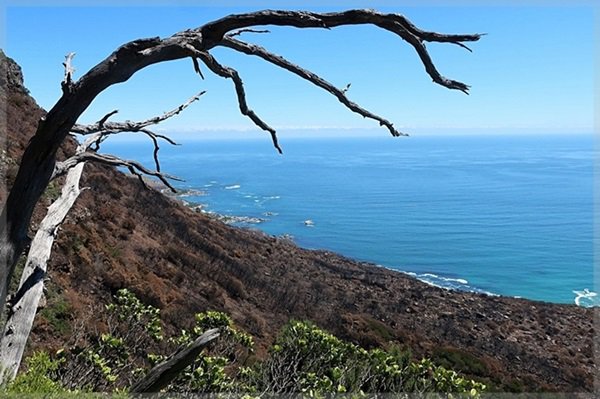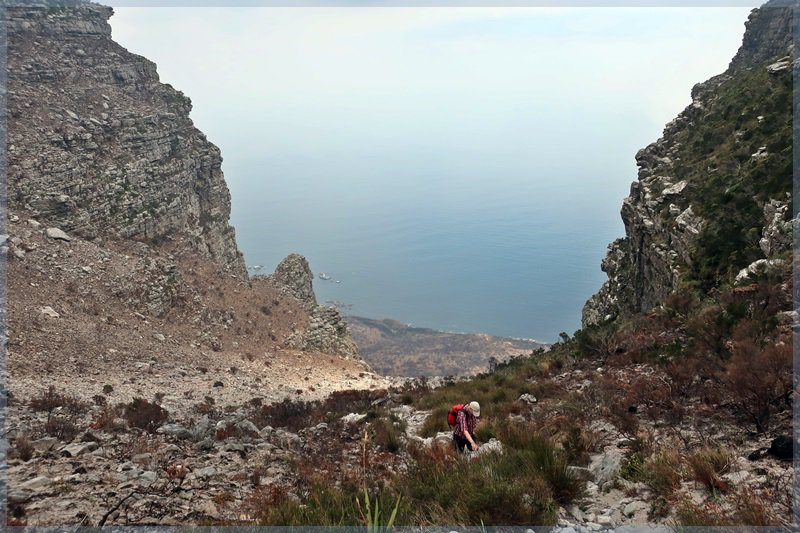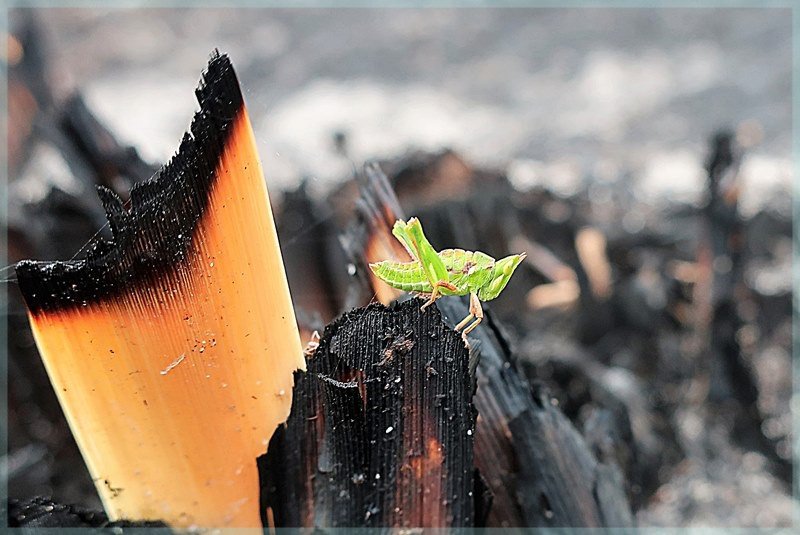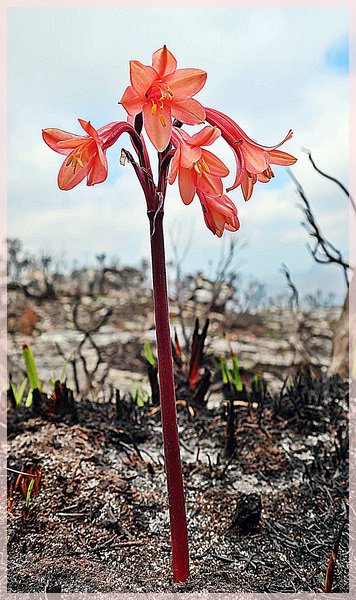Good Luck Young Survivor
Periodic fires are essential for many species of fynbos - the predominant vegetation type in Cape Town. Without them these local plants cannot reproduce. But this year’s mid October Table Mountain fire on its west-facing flanks came unusually early. Fanned by high wind, it took four days to burn out.

Apart from plants other organisms have evolved to survive the Cape's summer fires. For instance, local birds give birth in the late winter and spring. This is so that by the time the season of heat and smoke comes their off-spring are sufficiently developed to fly away.

Likewise the Cape’s grasshoppers have over millennia selected to thrive in local conditions.
While evolution has successfully delivered the youngster, pictured below, to this time and place, the un-seasonal fire means it must now fend for itself - on a slope that is still warm and covered in ash and cinder.

There is some green and leafy sustenance still growing nearby. But for this infant nymph, might it be a hop too far?
Three weeks after the fire

The Fire Lilly is a plant that can remain in a non-flowering vegetative state for up to fifteen years. Then about a week after a fire a long leafless stem shoots out of the ash-strewn earth, and blossoms.